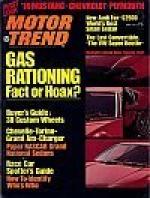|
This section contains 275 words (approx. 1 page at 300 words per page) |
The Office of Price Administration (OPA) developed a nationwide gas rationing system that went into effect on December 1, 1942. The oil industry and its assigned wartime government coordinator, Secretary of the Interior Harold Ickes (1874–1952), immediately protested the rationing of gas, because it was not in short supply anywhere except on the East Coast. Nevertheless, gas rationing proceeded. Five windshield stickers identified priority levels: A, B, and C stickers for automobiles, E stickers for emergency vehicles, and T stickers for trucks. Category A stickers entitled drivers to the smallest amount of gas, only 4 gallons a week. (For the average car at that time, 4 gallons would last approximately 60 miles.) Later the allotment was reduced to 3 gallons a week. Category B stickers were for drivers who had more-essential driving to do, such as war industry workers who drove car pools to the factory and back. They received the A-sticker allowance (3 or 4 gallons) plus a certain supplementary amount. Category C stickers provided even greater allowances for people who used their cars for work, such as doctors making house calls and driving to hospitals. E stickers were reserved for emergency use by police, doctors, and clergy and provided essentially all the gas these workers needed. T stickers
 Gas rationing stickers. AP/Wide World Photos. Reproduced by permission.
Gas rationing stickers. AP/Wide World Photos. Reproduced by permission.
ensured truckers whatever amount of gas they needed to complete their routes. The local OPA ration boards issued the stickers and determined the allowances. Hoping to get as much gasoline as possible, many drivers argued that they needed a B or C sticker. More than half the driving population, or about fifteen million drivers, received the B or C classification.
|
This section contains 275 words (approx. 1 page at 300 words per page) |


